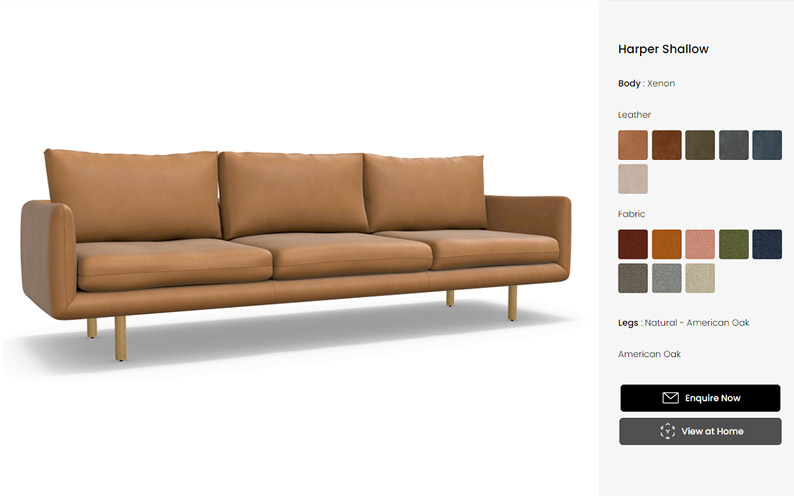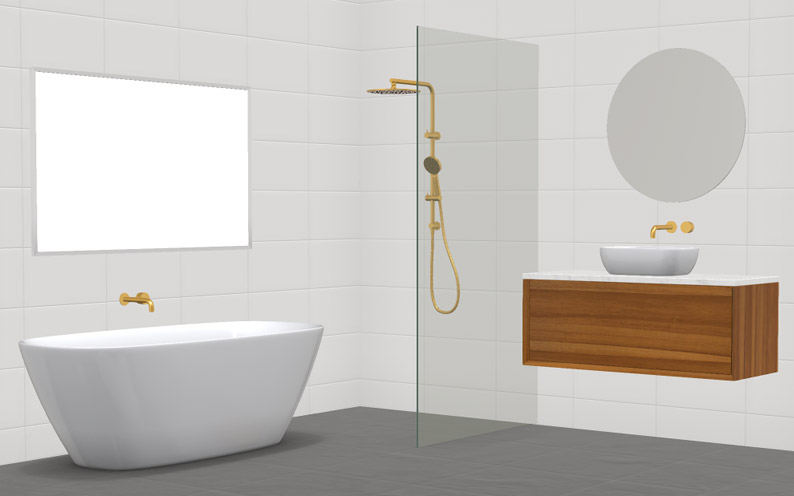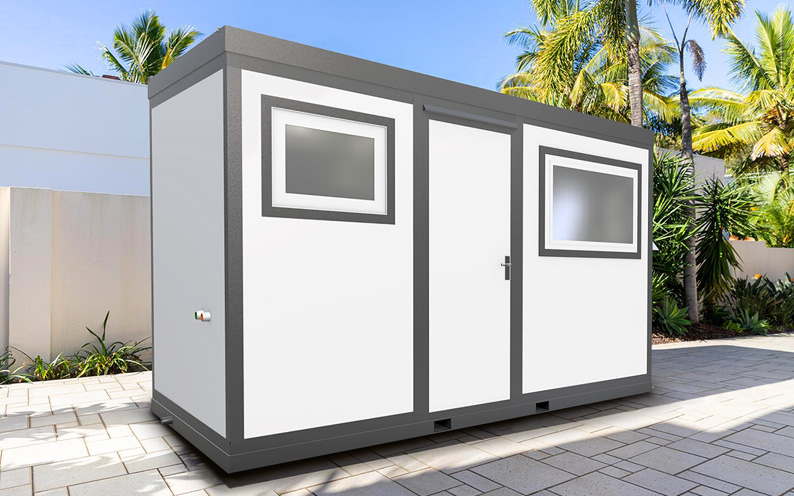What is a Product Configurator?
- What is a Product Configurator? - May 8, 2024
- Stonewood Outdoor Kitchen Configurator: The Sureproof Way to Online Sales Success - May 3, 2024
- TRAQ Modular Configurator Creates Limitless Design Possibilities - April 15, 2024
What is a product configurator? Why is it important? Do I need one? And what features should it have? These are just some questions you should answer before integrating this application into your company’s website.
In the past, having a customised product was extraordinary and expensive. However, buyer behavior has shifted. Today, the general trend is to purchase products that satisfy a specific need. Customers are increasingly looking for products that are tailored to their preferences and needs, and a product configurator can help businesses meet this demand.
This is where a product configurator comes in. It empowers customers to create their desired product without special knowledge, allowing them to change the color, material, shape, features and functions. They can rotate and see it from all angles in high quality, experiencing the product before they purchase it. This shopping experience takes place at home, in front of the screen, giving them a sense of control and satisfaction.
Before deciding what type of configurator you need to setup for your business, it’s best to understand what a product configurator is and how they function. This will help you make an informed decision during the implementation process.
What is a Product Configurator?
The term product configurator comes from “product” and “configuration.” The dictionary defines a “product configurator” as software that allows the assembly of a product from predefined product components and the ability to select characteristics based on specific rules.
In short, a Product Configurator is a digital solution that helps customers to design and adapt a product to meet their requirements. It allows customers to select different product options and create the best configuration for their product or service.
The best Product Configurators will integrate functionality such as 3D Product Visualisation, which helps potential customers see the product in high quality 3D and view it from different angles.
Another feature associated with product configurators is Augmented Reality, allowing customers to place the desired product in their real environment.
A Product Configurator tool also allows for better communication between the company supplying the product and the customer, as it can provide clarity on what is required and help maintain accurate order records.
Product configuration solutions are typically integrated into online ordering systems so customers can create and purchase custom products easily. They feature user-friendly interfaces and should be seamlessly integrated into a website so they are part of the buying process.
What are the Advantages of a Product Configurator?
Product configurators offer many advantages over traditional methods of customising and purchasing products. At a glance, some key benefits of product customisation tools include:
- They simplify the process of buying complex products
- Product Configuration speed up the purchase cycle by letting customers visualise all of your product options
- Fewer errors due to automated component checks and validations
- Automation of the order system and logical steps to build products
- Error-free compilation of modular and multi-part products
- A faster quotation process
- Allows customers to visualise their selections in real time
- Enable personalisation of products and options
- Can be seamlessly integrated into a website
- Makes the customisation process more interactive
- Can be used as a sales tool by staff
Performance Enhancement
The use of configurator software has been proven to increase sales and the conversion rate. Studies show that customisation can increase sales by up to 20%. Replacing traditional product photography with a 3D Product Configurator can boost conversion rates by up to 40%.
Simplification
Products with many variants can be easily displayed and the workflow is significantly simplified by seamless integration with your ERP (Enterprise Resource Planning) or CMS system. By leveraging a product configurator, you can reduce the countless number of brochures and catalogs used by your sales and marketing teams.
Increases Company Efficiency
By customizing the product, each potential client can create an item that is appropriate to their specific needs with a tap of a button. Sales time is optimised and the number of common questions from buyers is streamlined. Uncertainties such as Will these materials and finishes match with each other?, Which colors fit together?, How would this product will look in my space and How much does it cost? receive responses directly in the configuration app.
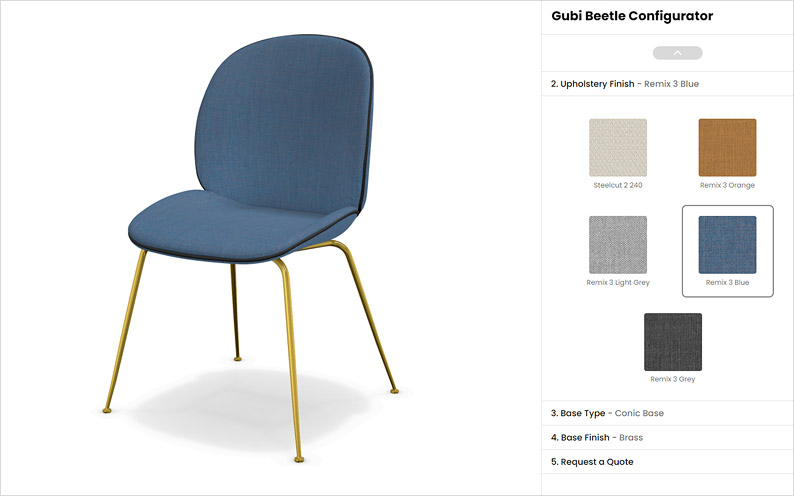
Boosted Customer Satisfaction & Buyer Confidence
Customising a product creates a great shopping experience and a solid emotional bond with the product. In fact, 66% of shoppers say that 3D Configurators and 360° views boost their purchase confidence. Using 3D products will increase customer loyalty and conversion rates by 250%.
You can read more about the benefits of using a 3D Product Configurator here.
Provide a 360-degree View
Visual engagement is crucial in online shopping. Customers want to see what they’re buying before ordering and a simple image gallery isn’t enough. A 360-degree viewing feature in a Product Configurator takes the visual experience to the next level, letting the customers explore the product, zoom into detail and truly understand what they’re purchasing.
For many companies, 3D products can significantly increase sales, improve customer engagement and reduce the rate of returns. When customers have a comprehensive understanding of what they’re buying, it’s a better buying experience and they’re more satisfied when the product arrives.
Who Benefits From a Product Configurator?
Product configuration software has benefits for product manufacturers, retailers and buyers. For example, it can be leveraged in the furniture industry to allow customers to configure their furniture, in the automotive industry to select car features and in the fashion industry to create personalised clothing.
What Are The Benefits of a Product Configurator for Retailers & Customers
Sales Team
If a sales team has an extensive product portfolio or list of options, it can be difficult to manage inventory and determine the best solutions for customers.
With a Product Configurator, sales teams can quickly showcase product options and fast track the sales cycle. A Product Configurator can feature part rules and automated procedures to simplify the entire sales process. Sales staff can act more autonomously and with greater confidence, allowing them to focus on providing a more effective sales experience.
Marketing
Configuration tools and apps provide an effective solution to continuously changing customer expectations and buyer behavior.
Customers can visualise all of the product options from the beginning of the journey, personalising an item according to their desires. A Product Configurator also integrates with a 3D Product Viewer, enabling customers to view a product from all angles and make the necessary changes. Customers can enter their contact details to save a configuration, download high-resolution pictures and receive additional information such as prices. This adds a dual benefit of converting a Product Configurator into a lead generator.
Since a Product Configurator uses advanced 3D rendering technology and the product customisation is done in real-time, this can reduce the marketing budget required for photography, generating lifestyle renders, product image galleries and social media promotion.
Customers
Companies using Product Configurators can better assist customers who buy online and instore. Product Configurators can be integrated with a CMS platform, ensuring that browsing information is retained for a personlised sales process. This allows salespeople to more quickly understand a customer’s needs based on their previous interactions and they can provide a more tailored sales experience.
Customers purchasing directly via an online product configurator will also benefit from an efficient sales experience, allowing them to configure the options they are most interested in.
Wholesalers, Dealers & Partners
A product configurator is an extremely useful tool for manufacturers’ wholesalers and partners. Having access to the manufacturer’s product configurator allows them to quickly access all the product information offered by the company and provide professional consultation services to the end customer.
Industries
Product configurators are widely used in many industries due to their ability to simplify the design, production and customisation processes. They are an effective tool for creating a range of configurable product options, generating quotations, part lists and assembly information.
Product Configurators enable customers and industry professionals to work together, by gathering customer information and understanding trends. They are particularly useful in online fashion, furniture, automotive, urban design, construction and building products.
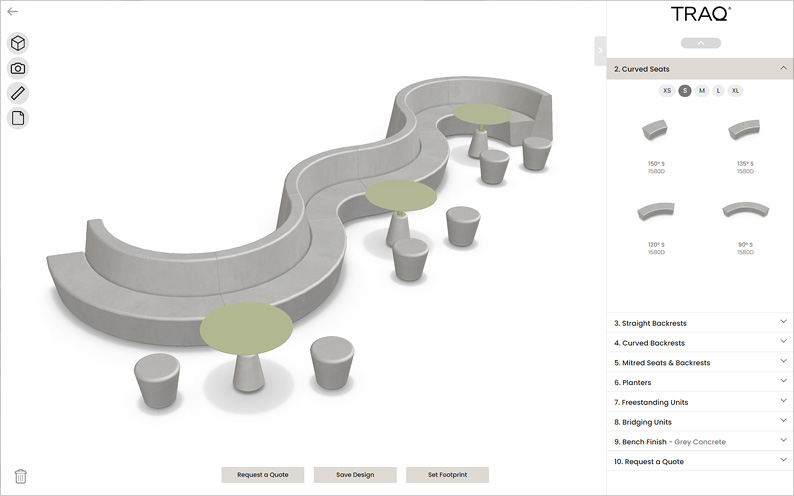
- Home Furniture Design (Modular and non-modular indoor furniture, outdoor furniture, BBQ, flooring) – By using solutions and apps that combine 3D Product Configuration with 3D Product Visualisation and AR, companies let customers visualise all of their product options and materials in ultra-realistic 3D and see them in their environments.
- Street Furniture & Urban Design – Companies using online configuration software can onboard their urban design products to a 3D Product Configurator or Modular Product Configurator via CAD files. INHAABIT’s Urban Design and Street Furniture 3D Configuration platform ensures products are displayed accurately and can showcase all of their configurable options.
- Bathware & Bathrooom Products—Renovating a bathroom can be a complex process and feature a large number of fixtures, fittings and styles that need to work together. An advanced 3D Bathroom Planner and Configurator allows customers to use drag & drop to position products, specify tiles, accessories and walk through their bathroom in high-quality AR. The 3D Bathroom Planner connects with AR + 3D products on the company’s website, creating a consistent user experience to increase sales and leads.
- Modular Buildings & Pods – Modular buildings and office pods can come in many sizes, layouts, and options. The amount of options can slow down the purchase process if customers cannot visualise and understand the variations. 3D Configurators & Augmented Reality solve this problem by allowing users to see the different buildings or pods with realistic sizing and change options with the tap of a button.
- Construction & Manufacturing – The ease of specifying a product, part lists and build processes can significantly reduce the effort required downstream in manufacturing and construction. A product configurator can organise and simplify these initial processes as well as providing a visual interface for customer to choose options. Construction and manufacturing often have engineering CAD files available and these can be more efficiently converted into AR + 3D models for use in a Product Configurator.
How Does a Product Configurator Work?

Product Configuration software helps customers build products by combining individual 3D parts according to predefined rules. These rules are defined by the retailer and manufacturer and ensure that the 3D product aligns with the the real options of a physical product.
Customers interact with a 3D Product Configurator on their deskop or mobile devices. Once a product is customised, they can often save their configuration or add it to their cart to make a purchase.
Essential Product Configurator Features
Depending on the industry, a 3D Product Configurator can have many features.
Customisation Options: The main ability is to be able to customise a product. This can be a set of thumbnails in a menu or dropdown options and allows customers to instantly visualise their selections.
Visualisation Tool: If the Product Configurator is a 3D Configurator, it will use an advanced 3D rendering engine to show the product in 360°. Generally, the more realistic the product appears, the greater the purchase confidence that customers acquire.
Augmented Reality: Many configurators come with Augmented Reality, an ultra-realistic web-based solution that helps customers quickly try a product in their space. A good AR experience should display the product with realistic sizing and materials, allowing a customer to accurately visualie how the product will appear in real life. AR adds an extra layer of purchase confidence to an existing ecommerce and configuration processes.
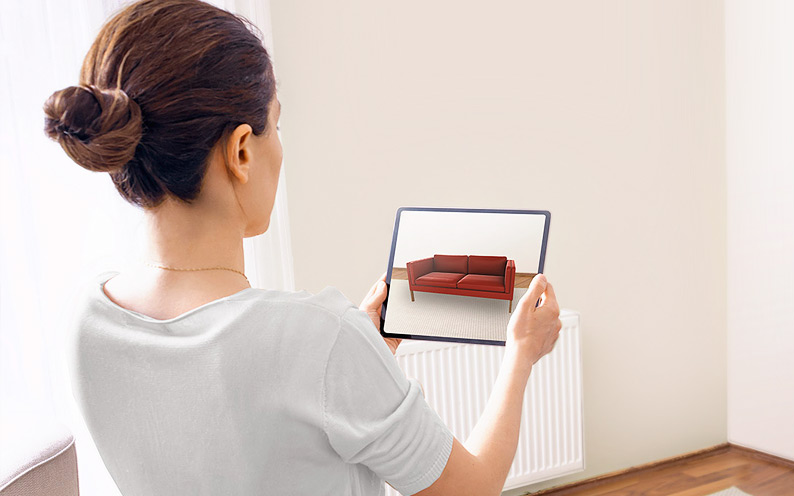
Configure Price Quoting (CPQ): This feature allows customers to instantly calculate the price of their configuration before placing the order. It allows them to personalise a product so it aligns with preferences and budget. They can then make a more informed purchasing decision and this can speed up the sales cycle.
Checks Inventory Levels: Another feature of a product configurator and product builder, is the ability to sync with an inventory systems. This provides multiple benefits such as letting customers know when an option or style is out of stock and helping sales staff understand when items need replenishing. It allows companies to respond quickly to customer orders and better manage the sales experience.
Integrations: This is important for product configuration software as it allows for data sharing between different applications and extending features. Some of the systems that can integrate with product configurators include:
- Enterprise Resource Planning software (ERP)
- Customer Resource Management plaforms (CRM)
- Ecommerce website platforms
- Supply Chain Management software (SCM)
- Product Data Management software (PDM)
- Computer Aided Design files (CAD)
- Online Forms & Plugins
- Configure Price Quote software (CPQ).
How Much Does a Product Configurator Cost?
Product configuration applications can be built with varying levels of complexity and options. This will depend on the industry, budget and requirements of the retailer or manufacturer. Product Configurators usually follow a SaaS model with a setup cost and ongoing fees for hosting and support.
Factors that influence the price of configuration software include:
- Key features that are built into the platform or need to be extended
- The amount of products and options that the configurator needs to display
- The complexity of the configuration required
- If products and modules are available as CAD files
- The level of realism required for the 3D products
- The number of materials or styles available
- Additional integration options such as ecommerce integration
- How the product configurator is integrated with the website
- Ongoing maintenance, platform access and support
- Some configurators may also charge for user traffic and transactions
The cost of developing a 3D configuration solution depends on the specific functionality and number of products. Generally, it is better to choose a configuration platform that is tailored for a specific industry, rather than choosing a one size fits all platform. This will ensure that the configurator is proven in the particular industry and will have ongoing support for future extendability.
Product Configurator Types
Static 2D Configurators: These are the most basic product configurators and have since been superceded by 3D Configurators. A 2D Configurator generally displays a flat image and options are be overlayed on top. Since it is created using images, customers will be unable to rotate the product and can only see it from one angle. This solution is not compatible with AR and may provide minimal benefits over image gallery on a website.
3D Product Configurator – This is the most popular type of configurator and is also known as a 3D Visual Configurator. It gives customers the most freedom to explore and customise a product. It leverages high quality 3D visuals to provide an interactive customisation experience, allowing customers to rotate products in 360 degrees. A 3D Configurator can be combined with Augmented Reality to provide an advanced shopping experience that allows customers to build, visualise and try a product in their home. 3D configurators give buyers a more interactive experience that shows them exactly what they will get from their product.
Modular Configurator – These configurators enable users to join multi-part configurable products or design complex modular layouts. Modular Product Configurators can feature both a 2D and 3D perspective. As an example, a customer may build an outdoor bench layout from a top view and then jump into a 3D perspective to further customise arms, legs and bench materials. Some Modular Configurators will provide an entirely 3D experience and allow customers to drag & drop parts in 3D.
Stage Configurators – This type of configurator implements a guided step-by-step configuration process to direct customers toward a call to action. As the name suggests, the configuration options are displayed in stages, allowing customers to run through the steps and add a product to the cart at the end. A Stage Configurator displays 3D products in ultra-realistic quality and can be seamlessly embedded into a produt page. Augmented Reality can be added on to further increase purchase confidence.
Sales Configurators – CPQ (Configure Price Quote) solutions are configurators that focus on specifications and quotations. They are often used by manufacturers that have lower priority on high quality 3D visuals, but are looking for software for staff to generate quotations. Sales or CPQ configurators are generally less suitable for retailers looking to provide an ecommerce focused experience for customers, due to their more basic 3D visualisation and polish.
Configuring Complex Products With Ease
Staying ahead of the competition requires innovative solutions. Introducing a 3D Product Configurator for your products can be a game-changer that can revolutionise your sales process and help you stay ahead of the competition.
If you want to know more about what a product configurator is, how 3D configurators are designed and implemented by INHAABT for successful companies around the world, browse our Customer Stories and Blog. section.

